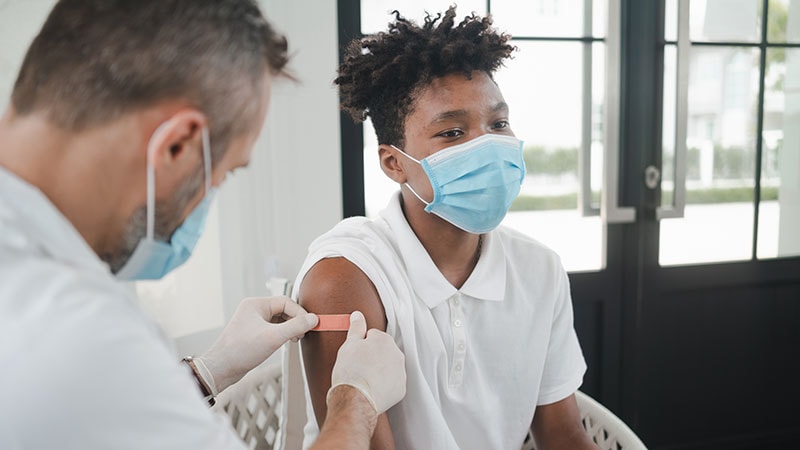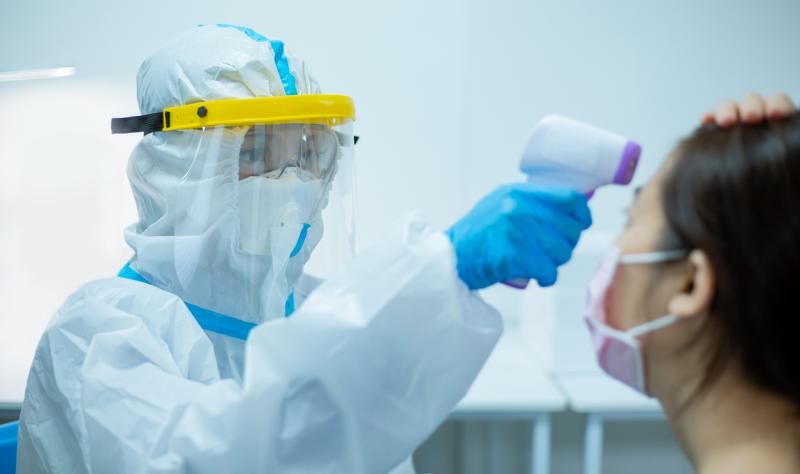Myocarditis Rare But Ticks Upward After COVID Booster in Youth


Editor’s note: Find the latest COVID-19 news and guidance in Medscape’s Coronavirus Resource Center.
A national study provides further evidence that myocarditis is uncommon following mRNA COVID vaccination among children and younger adults, but also identifies a bump in myocarditis rates after the first booster.
Among people aged 5 years to 39 years, myocarditis/pericarditis occurred during days 0 to 7 after vaccination in approximately:
-
1 in 200,000 doses after the first dose,
-
1 in 30,000 doses after the second dose, and
-
1 in 50,000 after the first booster.
Myocarditis rates varied by age and sex, and were disproportionately higher among males, especially for adolescent boys after dose 2 and first boosters.
The researchers point out that the incidence after first boosters was generally higher than after dose 1, consistent with data from Israel. In contrast to this earlier report, however, the incidence after the first booster wasn’t consistently lower than after the second dose in the primary vaccination series.
Indeed, the highest incidence was in adolescent boys receiving the Pfizer-BioNTech vaccine, with approximate rates of:
-
1 in 5300 for ages 16-17 years after a first booster (incidence rate/million doses, 188.0),
-
1 in 6700 for ages 12-15 years after dose 2 (incidence rate/million doses, 150.5), and
-
1 in 7300 for ages 16-17 years after dose 2 (incidence rate/million doses, 137.1).
Data were not available for subgroups under age 18 receiving the Moderna vaccine; however, the incidence rate/million doses for males aged 18 to 29 was 24.2 after dose 1, 97.0 after dose 2, and 64.0 after the first booster.
The study was published online October 4 in the Annals of Internal Medicine.
“The absolute highest incidence of all the numbers was in the 16- to 17-year-olds after the first booster. However, when you look at the second dose in that same age group, it was also elevated and also in the 12- to 15-year-olds,” principal investigator Nicola P. Klein, MD, PhD, said in an interview. “I don’t know why it’s happening.”
“All I can say is I think, overall, the risk benefit greatly favors vaccinating young adolescents also with their booster dose,” she added. “But I can’t comment on what the biological mechanism is because I don’t think anyone knows.”
As to why the findings vary from the previous report, the Israeli report didn’t have as many booster doses included in the data and covered an earlier period (ending December 15, 2021) in the vaccination campaigns, observed Klein, director of the Kaiser Permanente Vaccine Study Center in Oakland, California.
The present study used data from the Vaccine Safety Datalink to identify 320 potential cases of myocarditis/pericarditis across eight participating health plans that presented in the emergency department and inpatient setting after administration of 6.9 million primary series COVID-19 vaccinations (between December 14, 2020, and August 20, 2022). Medical record review with physician adjudication verified 224 cases, with 137 occurring 0 to 7 days after vaccination included in the analysis.
After the first dose, there were 18 myocarditis cases (10 with Pfizer; 8 with Moderna) out of 3.5 million doses administered.
A total of 119 cases occurred after the second dose (91 with Pfizer; 28 with Moderna) out of 3.4 million doses. In all age groups, the incidence per million doses after both vaccinations was numerically higher in male than in female patients.
The researchers identified another 101 potential myocarditis/pericarditis cases after 1.8 million first booster doses between September 24, 2021, and August 20, 2022.
Of these, 77 cases were verified and 39 occurred in the first week (28 with Pfizer; 11 with Moderna). Once again, the incidence in days 0 to 7 days was higher in males in all age groups.
The patterns by sex and age subgroups were similar to those reported to the US Vaccine Adverse Event Reporting System (VAERS), whereas rates of myocarditis/pericarditis in the present population were higher, particularly after first boosters. This may be because cases were identified using active surveillance rather than the more passive nature of VAERS reporting, the authors suggest.
It’s unclear whether the results were influenced by the timing between dose 1 and 2, at just 21 days for the Pfizer vaccine and 28 days for the Moderna vaccine. Previous studies, however, have reported a lower risk of myocarditis in countries, such as the UK and Canada, where the required interval between doses is longer.
Klein declined to comment on whether this was a factor but noted there was “very little variability” in the timing of the doses. “What I can tell you is that the CDC has changed their clinical considerations to allow individuals to extend their timing between doses 1 and 2 for those receiving their primary vaccines for the first time and that’s a conversation between their physician and themselves.”
Importantly, and consistent with previous work by the team, chart reviews found no deaths and all patients were discharged home after a median of 1 to 2 days.
While the study was strengthened by active surveillance and verification of cases, Klein and colleagues acknowledge it lacked a control group and did not capture patients presenting in outpatient settings or those with a less specific diagnosis code like chest pain.
“Our findings can inform risk-benefit analyses, which thus far have consistently found the benefits of mRNA vaccination greatly outweigh the risks,” they conclude. “Continued communication with patients and providers about risk for myocarditis/pericarditis after mRNA COVID-19 vaccination, as well as ongoing population-based safety surveillance is warranted.”
The study was funded by the Centers for Disease Control (CDC). Klein reported receiving grants to her institution from the CDC, Pfizer, Merck, GlaxoSmithKline, Sanofi Pasteur, and Protein Science (now Sanofi Pasteur). Co-authors Eric Weintraub, MPH, is employed by the CDC; Kristin Goddard, MPH, reported a contract with the CDC; and Kayla E. Hanson, MPH, reported payments from the CDC to her institution.
Ann Intern Med. Published online October 4, 2022. Full text
Follow Patrice Wendling on Twitter: @pwendl. For more from theheart.org | Medscape Cardiology, follow us on Twitter and Facebook.



